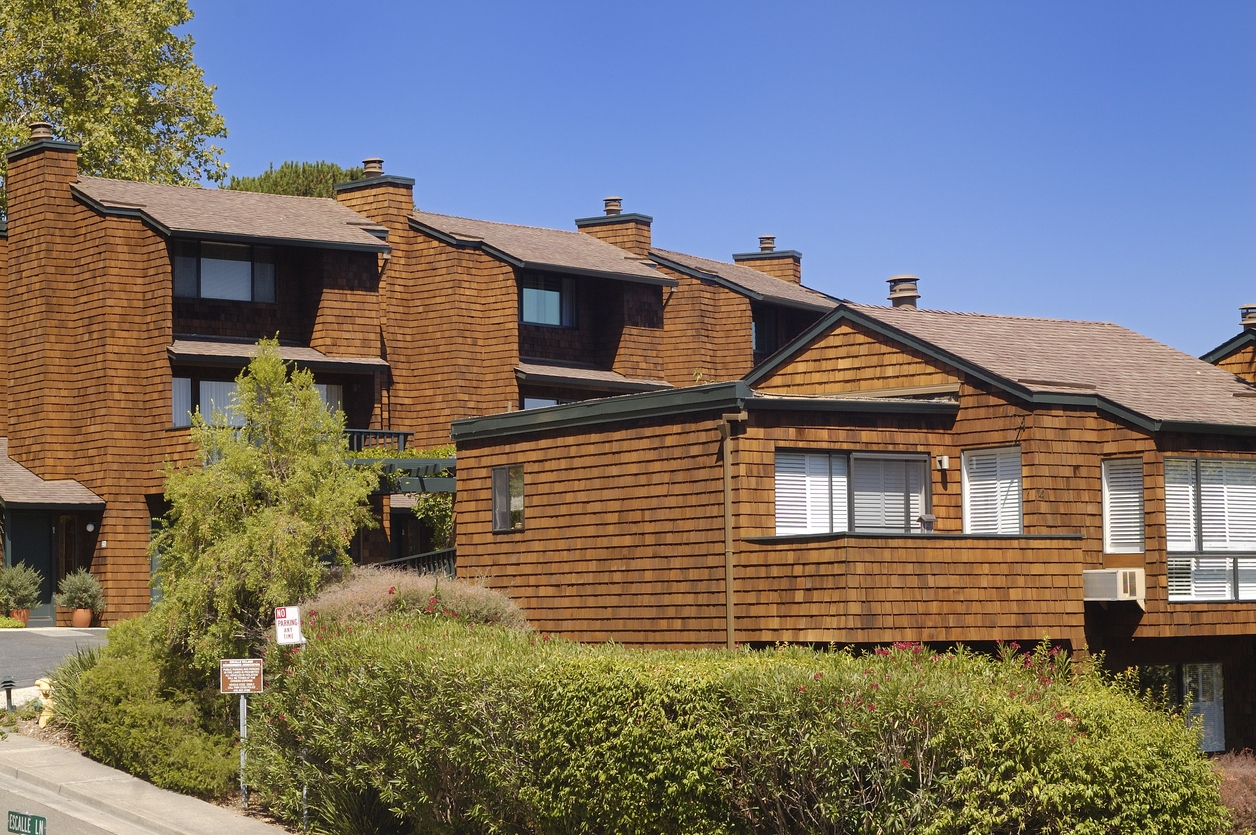Suppose your home is made of cedar—you’ve likely encountered cedar bleed and tannin stains. These are common problems when working with cedar wood. Cedar bleed occurs when the natural oils and resins in the wood seep through paint or finish, causing discoloration. Tannin stains result from the tannic acid in the wood, which can also cause unsightly marks on painted surfaces.
Homeowners and DIY enthusiasts often face challenges with these stains, including proper surface preparation, selecting the correct primer, and ensuring a long-lasting, aesthetically pleasing finish. Understanding these issues is crucial for achieving successful and durable results in cedar wood projects.
Understanding cedar bleed and tannin stains
What is cedar bleed?
Cedar bleed refers to the phenomenon where natural oils and tannins from cedar wood seep into the surface, causing discoloration. This problem can occur on interior and exterior surfaces where cedar is used. The stains often appear as dark, reddish-brown blotches that can spoil the appearance of painted or finished wood surfaces.
Causes of tannin stains in wood
Tannin stains occur when the tannins in wood react with moisture, causing them to migrate to the surface. Tannins are natural compounds found in many types of wood and serve various functions, including protection against pests and decay. Several factors can contribute to tannin stains:
- Moisture exposure: High humidity, rain, or improper wood drying can cause tannins to leach out.
- Finishing issues: Using water-based primers and paints can sometimes exacerbate tannin bleeding, as the water can draw out the tannins.
- Wood species: Certain types of wood have higher tannin content, making them more prone to staining.
- Improper sealing: Failing to seal the wood correctly can allow tannins to migrate through the finish.
Types of wood prone to these issues
Certain types of wood are more susceptible to tannin staining and cedar bleed due to their high tannin content. These include:
- Cedar: This wood is known for its durability and resistance to decay. It is also high in tannins, making it prone to bleed, especially in exterior applications.
- Redwood: Similar to cedar, redwood has high tannin content, which can lead to staining if not properly treated.
- Oak: Both red and white oak contain significant tannins that can cause staining, especially when exposed to water.
- Mahogany: This wood is rich in tannins, which can lead to discoloration, particularly if it is not adequately sealed.
- Chestnut: Another wood with high tannin levels, chestnut can be prone to staining issues.
Use appropriate sealing and priming techniques to prevent these issues. Using stain-blocking primers, ensuring proper drying and curing times, and selecting the right finishes can help mitigate the risk of tannin stains and cedar bleed.
Preventative measures
Preventing cedar bleed and tannin stains involves selecting appropriate materials, applying effective pre-treatments, and following best practices during installation. Here’s a detailed guide on how to address each aspect:
1. Choosing the Right Wood and Finishes
Wood selection:
- Use kiln-dried cedar: Kiln-dried cedar has less moisture content, reducing the likelihood of tannin bleed.
- Choose stain-resistant cedar: Some cedar varieties are naturally more resistant to tannin bleed. Western Red Cedar is a popular choice for its lower tannin content.
Finish selection:
- Oil-based primer: Use a high-quality oil-based primer specifically designed to block tannins. These primers seal the wood, preventing tannins from leaching out.
- Acrylic latex paint: Follow with high-quality acrylic latex paint. This type of paint is durable and provides additional sealing against tannins.
2. Pre-treatment options for wood
Cleaning:
- Wash the wood: Before any treatment, clean the wood thoroughly to remove dirt, mildew, and loose fibers. Use water and a mild detergent or a wood cleaner.
- Oxalic acid treatment: A solution of oxalic acid is ideal for wood that already shows signs of tannin stains. It helps to neutralize the tannins on the surface.
Sanding:
- Light sanding: Sand the wood lightly to open up the grain, which allows primers and finishes to adhere better. Ensure you sand with the grain to avoid damaging the wood.
Priming:
- Use a tannin-blocking primer: Apply a high-quality tannin-blocking primer. These specially formulated primers seal the tannins in the wood and prevent them from bleeding through the finish.
3. Best practices for installation to minimize bleeding
Moisture control:
- Proper ventilation: Ensure that the area where the cedar is installed is well-ventilated to reduce moisture buildup.
- Use vapor barriers: In areas prone to high humidity, such as bathrooms or exterior applications, use vapor barriers to prevent moisture from reaching the wood.
Installation techniques:
- Prevent direct contact with the ground: When installing cedar outdoors, ensure it does not have direct contact with the ground to avoid absorbing moisture.
- Use stainless steel or coated fasteners: Tannins can react with iron, causing dark stains. Use stainless steel or coated fasteners to prevent this reaction.
Maintenance:
- Regular inspections: Periodically inspect the cedar for signs of tannin bleed and address any issues promptly.
- Reapply finishes: Depending on the exposure and wear, reapply the protective finishes as needed to maintain a barrier against tannin bleed.
Combining these measures significantly reduces the risk of cedar bleed and tannin stains, ensuring your wood maintains its aesthetic appeal and durability.
Identifying the problem
Signs of cedar bleed and tannin stains
Cedar bleed and tannin stains often manifest as surface discoloration, particularly on painted or stained wood. Here are the signs to look for:
- Yellowish or brownish stains: These stains usually appear as yellow or brown patches on painted surfaces. They can be quite prominent on light-colored paints.
- Localized discoloration: These localized stains are common in areas where the wood grain is most pronounced, as tannins are more concentrated.
- Bleeding through paint: If you notice stains appearing through multiple layers of paint, it’s a sign of tannin bleed. This issue can occur even after applying primer and paint.
- Sticky or resinous residue: Sometimes, especially with cedar, you might notice a sticky or resinous residue on the surface, indicating the presence of natural oils or resins.
Differentiating between tannin stains and other types of discoloration
Distinguish tannin stains from other discoloration issues to apply the correct remedy – this is very important! Here’s how you can differentiate:
- Water stains: These often appear as rings or streaks and are typically lighter in color. Moisture or leaks are the usual causes of water stains.
- Mold or mildew: These stains are usually black, green, or grey and have a fuzzy or powdery texture. They are often found in damp or poorly ventilated areas.
- Rust stains: Rust stains are reddish-brown and usually appear near metal fixtures or fasteners.
- Tannin stains: As mentioned, tannin stains are yellowish to brown and bleed through paint. They are more uniform and don’t have the distinct shapes of water or rust stains.
Assessing the severity of the issue
Assess the severity of cedar bleed and tannin stains to address the problem:
- Extent of discoloration: Check how widespread the stains are. Small, localized stains might be easier to handle, while extensive discoloration indicates a more severe issue.
- Depth of penetration: Determine if the stain is superficial or has penetrated deeply into the wood or paint layers. You can assess this by lightly sanding a small area to see how deep the stain goes.
- Previous attempts at treatment: If the area has been previously treated or repainted but the stains keep reappearing, it indicates a persistent issue with tannin bleed.
- Underlying causes: Investigate any underlying causes, such as improper sealing, inadequate priming, or exposure to moisture. Addressing these causes is crucial for a long-term solution.
Identify and understand the signs, differentiate between tannin stains and other types of discoloration, and assess their severity. Doing so effectively addresses and manages cedar bleed and tannin stains.
Effective solutions and treatments
Cedar bleeding and tannin stains can be challenging when working with cedar wood, but you can effectively prevent these issues with the correct preparation and treatments. Here’s a comprehensive guide on how to address cedar bleeding and tannin stains:
1. Cleaning and preparing the surface
1. Cleaning:
- Wash the surface: Clean the cedar thoroughly to remove dirt, mildew, or contaminants. Use a mild detergent mixed with water or a wood cleaner formulated for cedar.
- Rinse and dry: After washing, rinse the surface with clean water and allow it to dry completely. Cedar must be fully dry before you move to the next step to ensure proper primer and paint adhesion.
2. Sanding:
- Smooth the surface: Lightly sand the cedar to create a smooth, even surface. Use fine-grit sandpaper (120-150 grit) to avoid damaging the wood.
- Remove dust: After sanding, remove all dust and debris using a tack cloth or a vacuum with a brush attachment.
2. Suitable primers and sealers
A. Primers:
Oil-based primers: Oil-based primers are highly effective at blocking tannins and preventing cedar bleed-through. They provide a robust barrier that prevents stains from seeping through the topcoat.
- Example: Zinsser Cover Stain, Kilz Original.
Stain-blocking primers: These specially formulated primers block tannin stains. They can be water-based or oil-based, but oil-based varieties are generally more effective for severe tannin issues.
- Example: BIN Shellac-Based Primer, Kilz Premium.
B. Sealers:
Shellac-based sealers: Shellac-based sealers are excellent at sealing in tannins and preventing bleed-through. They dry quickly and offer excellent adhesion.
- Example: Zinsser B-I-N Shellac-Base Primer.
Clear sealers: You can use clear sealers for projects where you want to maintain the cedar’s natural look. They penetrate the wood and provide a barrier against tannins.
- Example: Zinsser Clear B-I-N Advanced Synthetic Shellac Sealer.
3. Painting and staining techniques to prevent bleed-through
A. Painting:
- Apply primer: Start with a coat of a high-quality, stain-blocking primer. Ensure complete coverage and allow it to dry according to the manufacturer’s instructions.
- Multiple coats: For severe tannin issues, apply a second coat of primer.
- Topcoat: Once the primer is fully dry, apply your chosen topcoat paint. For the best results, use high-quality acrylic latex paint. Apply at least two coats of paint, letting each coat dry thoroughly.
B. Staining:
Use stain-blocking conditioner: Before applying stain, use a stain-blocking wood conditioner or pre-stain wood conditioner to help prevent blotchiness and even out the wood’s porosity.
- Example: Minwax Pre-Stain Wood Conditioner.
Stain application: Apply the stain evenly, following the wood grain. Use a brush, roller, or cloth, depending on your preference. Wipe off excess stains to avoid blotches.
Sealer or topcoat: After the stain has dried, apply a clear sealer or topcoat to protect the wood and prevent tannins from seeping through. Water-based polyurethane or spar urethane are good options for outdoor cedar.
Tips for best results
- Test first: Always test your primer, paint, or stain on a small, inconspicuous area to ensure compatibility and desired results.
- Adequate drying time: Allow each coat of primer, paint, or stain to dry completely before applying the next coat.
- Maintenance: Regular maintenance and inspection can help you catch any tannin bleed-through early and address it before it becomes a significant issue.
These steps can treat cedar wood and prevent unsightly tannin stains and bleed-throughs, ensuring a long-lasting and beautiful finish.
Long-term maintenance
After addressing cedar bleed and tannin stains, consider these tips to maintain your cedar surfaces:
1. Regular care to prevent recurrence
- Routine cleaning: Clean the cedar surface regularly with a mild detergent and water solution to remove dirt and prevent mold and mildew growth. Avoid using harsh chemicals that could damage the wood.
- Inspect frequently: Check the cedar surfaces regularly for any signs of new stains or discoloration. Early detection of tannin bleed can prevent severe issues.
- Moisture control: Ensure proper drainage and ventilation around cedar surfaces to minimize moisture exposure, which can exacerbate tannin bleeding and promote mold growth.
2. Protective coatings and finishes
- Sealants: Apply a high-quality, UV-resistant sealant to protect cedar from the elements. Sealants act as a barrier against moisture, reducing the chances of tannin bleed.
- Stains and paints: Use stains or specifically formulated paints for cedar. These products often contain additives that help block tannins and protect against UV damage.
- Reapplication: Reapply protective coatings per the manufacturer’s recommendation, typically every 2-5 years. The frequency depends on the climate and the exposure level to the elements.
3. Tips for preserving the beauty of wood surfaces
- Avoid direct sunlight: Whenever possible, protect cedar surfaces from prolonged direct sunlight to prevent fading and drying out. Using shades, awnings, or strategic landscaping can help.
- Furniture and planters: Use coasters or mats under planters and furniture to prevent moisture buildup and tannin stains. Ensure that no metal objects are left in contact with the cedar, which can cause rust stains.
- Gentle cleaning: When cleaning cedar surfaces, use soft brushes or cloths to avoid scratching the wood. Avoid pressure washing, which can force water into the wood and cause damage.
- Conditioning oils: Consider using wood conditioning oils periodically to maintain the natural oils in the cedar. It helps preserve its rich color and prevent drying and cracking.
General recommendations
- Preventative measures: Addressing potential sources of tannin bleed early, such as ensuring that the wood is adequately dried before installation, can reduce the likelihood of problems down the line.
- Quality materials: Invest in high-quality, cedar-specific maintenance products. Cheaper alternatives may not offer the same level of protection and could lead to recurring issues.
- Professional advice: If unsure about the best products or techniques to use, consult with a professional. They can provide tailored advice based on your situation and the local climate.
Following these tips allows you to maintain your cedar surface’s beauty and integrity for many years. Correct and proper maintenance prevents the recurrence of tannin stains and protects your cedar surfaces from environmental damage. Protect your outdoor wood elements from UV damage and moisture with expert exterior staining—request a free estimate.
Conclusion
Follow these tips to address cedar bleed and tannin stains and commit to regular maintenance of your cedar surfaces. Doing so ensures the longevity of your home’s beauty, durability, and integrity. Serving the Bay area including the cities of Lafayette, Livermore, Milpitas, Moraga and Mountain House.
Don’t hesitate to contact our experts from Custom Painting, Inc. for professional assistance and exceptional results. Call us today at 925-294-8062 or use our contact form to request a free estimate. Our seasoned paint professionals will transform your space with expert care and precision!



